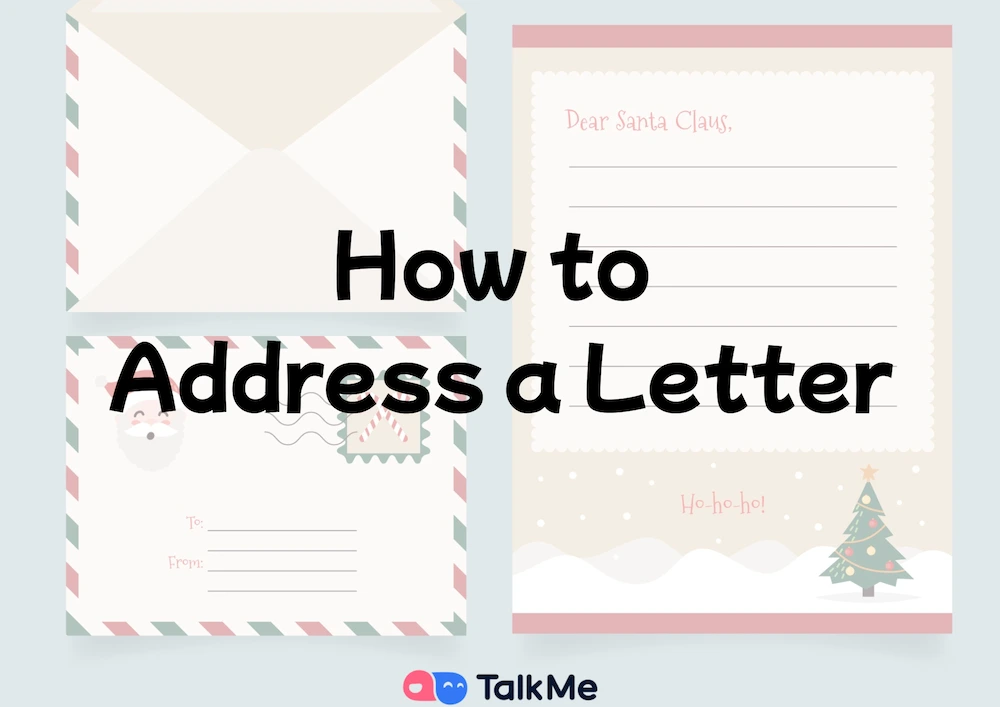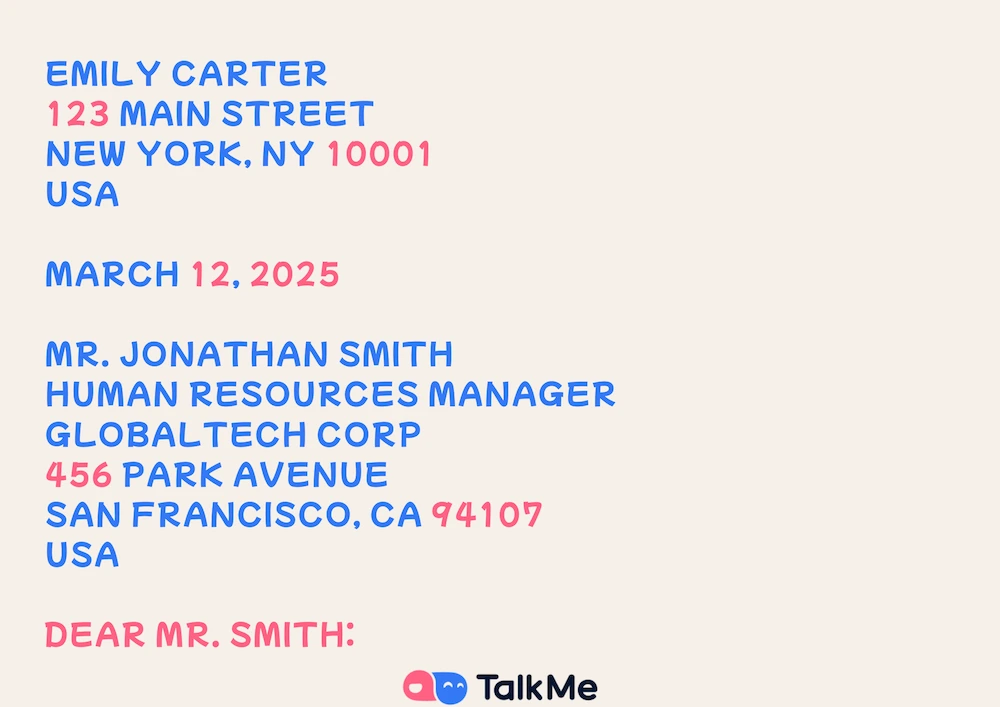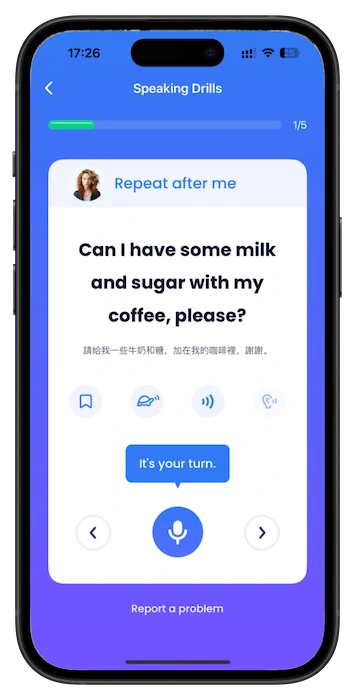In a world filled with emails, text messages, and instant chats, it might seem like formal letters are outdated. But that’s far from the truth. There are still many situations today where knowing how to address a letter is essential. From applying for jobs to sending business proposals, invitations, or official requests, formal letter writing remains an important skill.
However, many people—especially non-native English speakers—find it confusing to get the format right. They’re unsure about what to include, where to put the return address, or even how to address a letter envelope properly. If you’ve ever hesitated while writing a cover letter or mailing an invitation, you’re not alone.

The good news? Once you learn the basics of how to address a letter and format the envelope, you’ll feel much more confident. Let’s walk through this skill step-by-step.
Key Components of Addressing a Letter
Before you start writing, it’s important to understand the essential parts that make up a well-addressed letter. These elements help ensure your letter is taken seriously and reaches the correct recipient.
Sender vs. Recipient Information
The sender’s information—your name, address, and contact details—should always be included at the top of the letter. This lets the recipient know who you are and how to contact you. On the envelope, your address should go in the top-left corner.
The recipient’s information—name, job title, organization, and address—should follow next, typically aligned to the left just before the salutation.
Formal vs. Informal Styles
Use formal address styles when writing to companies, government agencies, or anyone you don’t know personally. Use informal styles when writing to friends or family. The structure may remain similar, but the tone, word choice, and salutation can be more relaxed in informal letters.
How to Address a Letter (Step-by-Step Format Guide)
Here’s your complete guide to crafting a professional letter layout. Whether you’re applying for a job or writing a formal request, this guide will help you get it right.

Step 1: Write Your Return Address
Start by placing your full name and address at the top-left corner of the letter. Include:
- Full Name
- Company Name (if applicable)
- Street Address
- City, State, and ZIP Code
- Country (if international)
- Email and phone number (optional but recommended)
Step 2: Add the Date
Leave a line and add the date you’re sending the letter. Use the format Month Day, Year (e.g., March 12, 2025).
Step 3: Include the Recipient’s Full Name and Title
Next, write the recipient’s full name along with any appropriate titles (e.g., Dr., Mr., Ms., Professor).
Step 4: Add the Company or Organization Name
If the person works for a company or institution, include the organization name on the next line.
Step 5: Insert the Full Mailing Address
Write the full street address on one line, followed by the city, state, ZIP code, and country (if applicable). Make sure everything is accurate to avoid mail delivery issues.
Step 6: Choose an Appropriate Salutation
Skip a line and add a polite greeting. Use:
- Dear Mr./Ms. Last Name
- Dear Dr. Last Name
- Dear Sir or Madam (if you don’t know the name)
Be sure to punctuate with a colon (:) or a comma (,) depending on the tone.
How to Address a Letter Envelope
Once the letter is ready, the next step is to send it—correctly! Here’s how to address a letter envelope so your message gets delivered without a hitch.
Sender Address Placement
Write your name and address in the top-left corner of the envelope. This is essential in case the letter needs to be returned.
Recipient Address Placement
Place the recipient’s name and address in the center of the envelope. Write it neatly and legibly. If typing, use a professional font like Arial or Times New Roman.
Tips for International Mail
If you’re sending the letter internationally:
- Write the country name in all capital letters on the last line.
- Avoid abbreviations—spell out everything clearly.
- Double-check that postal codes are included.
Using this format ensures your letter reaches the right destination without delay.
Address a Letter Format Examples
Let’s look at some examples of how to address a letter in different contexts.
Formal Example: Job Application Letter
Emily Carter
123 Main Street
New York, NY 10001
USA
March 12, 2025
Mr. Jonathan Smith
Human Resources Manager
GlobalTech Corp
456 Park Avenue
San Francisco, CA 94107
USA
Dear Mr. Smith:
Informal Example: Thank-You Letter to a Friend
Lena Kim
88 Lakeview Drive
Austin, TX 78701
March 12, 2025
Jason Miller
22 Pine Street
Seattle, WA 98101
Dear Jason,
As shown above, address a letter format can vary depending on whether the letter is formal or informal.
Common Mistakes to Avoid
Even with the best intentions, small errors can hurt the impression your letter makes. Here are some common pitfalls to steer clear of:
- Misspelling names or titles (double-check the recipient’s full name and honorifics)
- Incorrect envelope layout, such as putting the return address in the center
- Omitting ZIP/postal codes, especially in international mail
- Leaving out the sender’s contact details, which could make it hard for the recipient to reply
Avoiding these mistakes can make your communication look polished and professional.
Learn English Letter Writing with TalkMe AI
Many non-native English learners find formal writing one of the most challenging skills to master. That’s where TalkMe AI can help.
TalkMe AI is an interactive AI-powered English tutor designed to guide learners through real-life writing tasks like how to address a letter. Here’s how it supports your learning:

- Gives real-time feedback on letter format, grammar, tone, and structure
- Helps you practice writing formal and informal letters
- Includes simulated exercises for addressing a letter envelope
- Offers suggestions on improving clarity and professionalism
- Boosts your confidence in everyday and professional writing
Available in English, Chinese, Spanish, French, Japanese, and Korean, TalkMe AI makes formal writing accessible and intuitive for everyone.
Try TalkMe AI for free today and make your English writing smoother and smarter.
Conclusion: Master Letter Addressing with Confidence
Whether you’re applying for your dream job or writing a heartfelt message, knowing how to address a letter correctly helps you express yourself clearly and respectfully.
By understanding the right address format, salutation etiquette, and envelope layout, you set a professional tone from the start. Avoid common mistakes, follow a step-by-step structure, and practice regularly.
And remember, if you’re looking for a smarter way to improve your English writing, TalkMe AI is here to help. Explore more writing tips, learn with personalized feedback, and master formal English communication with confidence.




